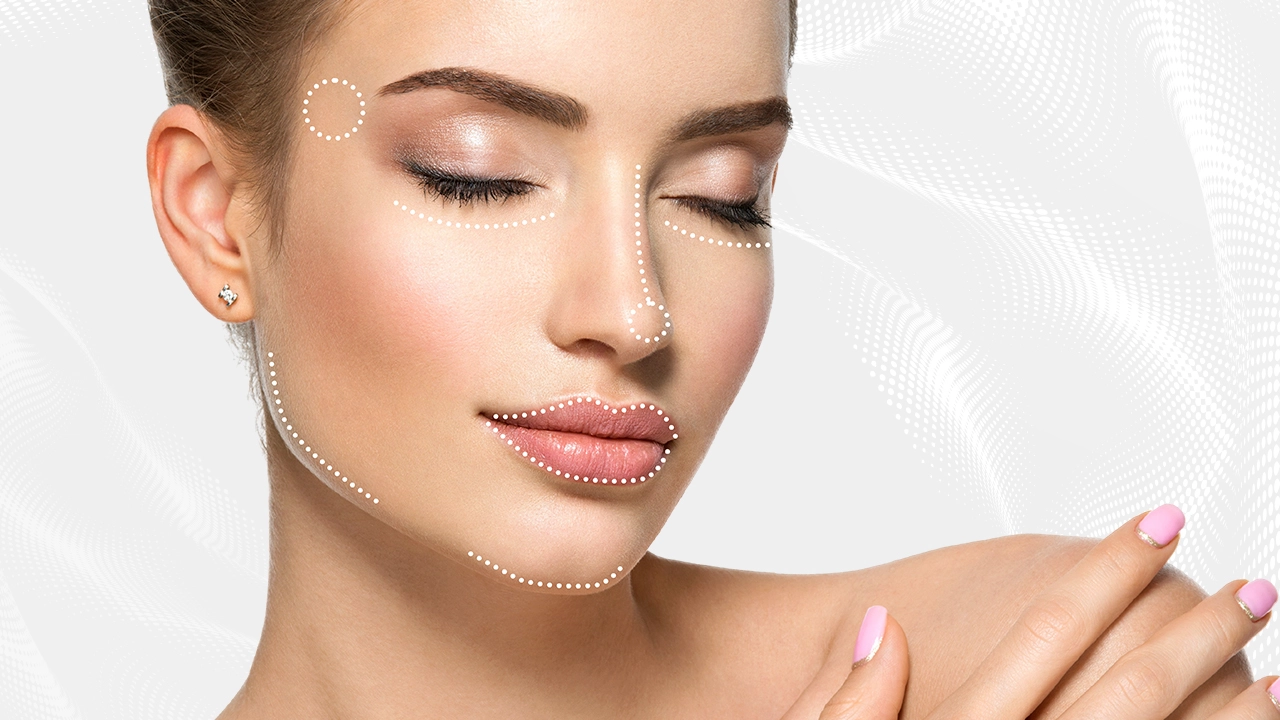
Forehead Filler
While the temple area appears full in younger ages, as individuals age, particularly those over 40, a sinking in the temples begins. This sinking is due to a decrease in fat tissue, weakening of muscles, erosion of bone tissue, and thinning of the skin in this area.
The temple area is a crucial point on our facial shape. The volume loss occurring in this area as one ages makes the person appear older than they actually are. When filler is applied to the temple area, the face is lifted upwards, wrinkles around the eyes decrease, and over time, the eyebrows, which tend to droop downwards, are lifted upwards. This results in a younger, more dynamic, and attractive appearance for the individual.
How is Forehead Filler Done?
The temple area is a region where important blood vessels and nerves pass anatomically, and therefore, temple filler procedures should be performed by experts and experienced individuals in this field. Fillers with high lifting power such as hyaluronic acid fillers or mineral fillers containing calcium hydroxyapatite or polycaprolactone are used.
Temple filling is done through injection. Prior to the filling procedure, an anesthetic cream may be applied to the temples to minimize pain and discomfort. The procedure typically lasts around 10-15 minutes. Patients can return to their normal daily activities on the same day as the temple filler application. Although the effect of the procedure is immediately visible, it takes one to two weeks to fully settle.
How Long Does Forehead Filler Last?
The durability of the application varies depending on the characteristics of the filler used, the individual's genetic makeup, and environmental factors, but on average, it lasts between 9 months to 2 years.
How Much Filler is Needed for Forehead Filler?
The need for filler varies depending on the extent of volume loss. Generally, between 1 and 4 cc is sufficient, but this amount can be increased if necessary. Even if there is significant volume loss, the entire area is not filled all at once. Adding 1 or 2 cc at a time with intervals is preferred.
The temple filler application, whose effect diminishes over time, can be repeated with the consent of the patient and the approval of the physician.
What Are the Possible Side Effects After Filler?
As with other filler applications, slight redness or bruising due to bleeding may occur on the skin after the procedure. In some patients, there may be mild pain, especially when opening and closing the mouth or eating, which can last for about a week. These side effects are caused by the injection and do not pose any significant problems as they naturally subside over a short period.
Precautions Before Filler Procedure
Approximately one week before the procedure, aspirin-like blood thinners should be discontinued, and vitamin E and supplements similar to green tea, which increase the risk of bleeding, should be avoided.
All painkillers and alcohol consumption should be discontinued two days before the procedure.
If there is a skin infection such as herpes or similar in the application area or its surroundings, it must be treated before the procedure, and the procedure should be performed after the treatment is completed.
If possible, refrain from wearing makeup and ensure that the face is clean before the appointment.
Post-Filler Procedure Precautions
Massaging or rubbing the treated area is not recommended.
Avoid exposure to heat, such as hot baths, steam rooms, saunas, tanning beds, or sunbathing, especially for three days if there is swelling or bruising.
Avoid blood-thinning medications and foods with blood-thinning effects for the first few days after the procedure.
Alcohol should not be consumed on the same day of the procedure.
Avoid strenuous exercise for about one day after the procedure.
Do not expose the treated area to water or apply any products or makeup on the same day due to the risk of infection, and avoid swimming pools for two days due to the risk of infection.
Avoid skincare procedures on the same day. If skincare procedures are to be performed, they should be done before the filler procedure or at least one week after.



